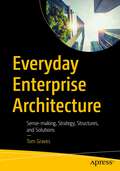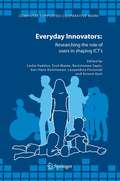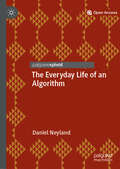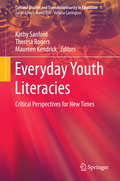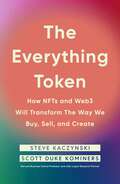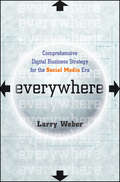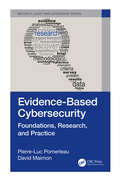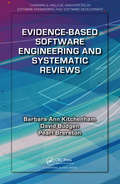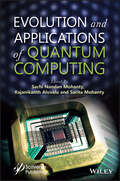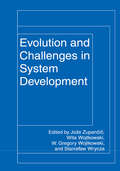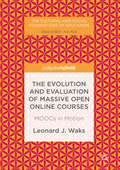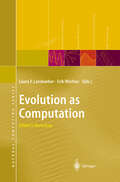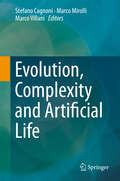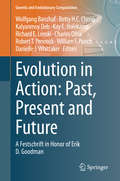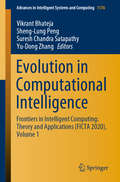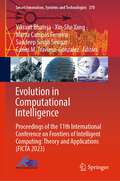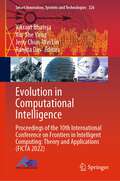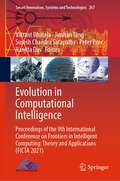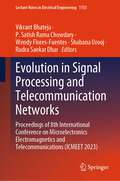- Table View
- List View
Everyday Enterprise Architecture: Sense-making, Strategy, Structures, and Solutions
by Tom GravesDiscover what needs to happen in enterprise-architecture practice—and not just its outcomes, but also the activities from which those outcomes would arise. This book reveals how business and enterprise architects can deliver fast solutions to an always-on-the-go business world.To begin, you'll review a new technique called "context-space mapping," which provides a structured method for sense-making across the entire context of an enterprise. Throughout the book, you'll concentrate on the routine practices that underpin each of the architecture disciplines. Working step-by-step through a real 10-day architecture project, this book explores the activities that underpin the strategy, structures and solutions in the real-time turmoil of an enterprise architect’s everyday work. You'll explore how and why and when the various documents, artefacts and items of ‘theory-stuff’ come into the practice – all those mainstream methods, frameworks, models, metamodels and other information sources. In the end, Everyday Enterprise Architecture will help you develop the skills, judgment, and awareness to keep enhancing the value of your architectural projects. What You'll LearnWork on architectures at "business-speed"Adapt architectures for different tasksGather, use, and manage architectural informationWho This Book Is ForEnterprise and business architects.
Everyday Innovators: Researching the Role of Users in Shaping ICTs (Computer Supported Cooperative Work #32)
by Kari-Hans Kommonen Leopoldina Fortunati Annevi Kant Leslie Haddon Enid Mante Bartolomeo SapioEveryday Innovators explores the active role of people, collectively and individually, in shaping the use of information and communication technologies. It examines issues around acquiring and using that knowledge of users, how we should conceptualise the role of users and understand the forms and limitations of their participation. To what extent should we think of users as being innovative and creative? To what extent is this routine or exceptional, confined to particular group of users or part of many people’s experience of technologies? Where does the nature of the ICT or the particularities of its design impose constraints on the active role that users can play in their interaction with devices and services? Where do the horizons and orientations of the users influence or limit what they want and expect of their ICTs and how they use them? This book enables a cross-fertilisation of perspectives from different disciplines and aims to provide new insights into the role of users, drawing out both applied and theoretical implications
The Everyday Life of an Algorithm
by Daniel NeylandThis open access book begins with an algorithm–a set of IF…THEN rules used in the development of a new, ethical, video surveillance architecture for transport hubs. Readers are invited to follow the algorithm over three years, charting its everyday life. Questions of ethics, transparency, accountability and market value must be grasped by the algorithm in a series of ever more demanding forms of experimentation. Here the algorithm must prove its ability to get a grip on everyday life if it is to become an ordinary feature of the settings where it is being put to work. Through investigating the everyday life of the algorithm, the book opens a conversation with existing social science research that tends to focus on the power and opacity of algorithms. In this book we have unique access to the algorithm’s design, development and testing, but can also bear witness to its fragility and dependency on others.
Everyday Youth Literacies: Critical Perspectives for New Times (Cultural Studies and Transdisciplinarity in Education #1)
by Kathy Sanford Theresa Rogers Maureen KendrickTestifying to the maturity of the youth literacy education field, this collection of papers displays the increasing sophistication of research on the subject, and at the same time offers pointers to its potential for development in the next decade. The contributors track the rapid proliferation of youth literacies in today’s digital age, from video games to social media and film production. Drawing on detailed research and an intimate knowledge of youth communities in nations as diverse as Canada and Uganda, they provide notable examples of digital literacies in situ, and challenge conventional wisdom about literacy education.The chapters do more, however, than merely offer reportage of a crisis in literacy education. The authors embrace the core challenge faced by educators everywhere: how to incorporate and utilize new modes of literacy in education, and how to realize the potential benefits of heterogeneous modern media in youth literacy education, especially in marginalized, remote, and disadvantaged communities. This volume expands our view of digital communications technologies and digital literacies to include complex understandings of how media such as translated videos can serve as learning tools for youths whose access to literacy education is limited. In particular, a number of contributing scholars provide important new information about the praxis of teachers and the literacies adopted by young people in Africa, a continent largely neglected by literacy researchers. This book’s global perspective, and its ground-level viewpoint of youth literacy practices in a variety of locations, problematizes normative assumptions about researching literacy as well as about literacy itself.
The Everything Token: How NFTs and Web3 Will Transform the Way We Buy, Sell, and Create
by Steve Kaczynski Scott Duke KominersNFTs cause excitement and skepticism. How much value can a token hold? What drives this value?To properly appreciate NFTs we must first understand what they actually are, how they work and in what contexts they are used.The Everything Token is an essential primer on NFTs (non-fungible tokens), explaining their use, purpose, and how businesses can create and exploit them to develop new product lines, building customer loyalty and increased revenues at the same time.Together the authors have spent much of the past few years embedded in NFT communities and helping launch NFT products. As self-described beta testers of this brand-new technology, they’ve seen its power first-hand and aim to educate others on the importance, uses and purpose of NFT and surrounding, ever-evolving technologies.Demystifying the complexities, two experts in NFTs show why we should take NFTs much more seriously than their reputation as fun digital art collectibles suggest. They have a wider variety of uses than one may realise.Gripping and accessible, this book provides a guide and an insight into what can often be a hard-to-grasp area of technology.
Everything You Need to Master Minecraft Earth: The Essential Guide to the Ultimate AR Game
by Ed JeffersonMinecraft Earth is the worldwide mobile gaming phenomenon. Now you can get ahead of the game with Everything You Need to Master Minecraft Earth, the essential guide to the Augmented Reality spin-off. You don't have to travel far to take your on-screen builds into the real world – learn how to craft amazing structures in your own living room, back garden and beyond.This unofficial book contains everything you need to master the game, including: Tips on how to build up your collection of blocks, mobs and rare items by finding Tappables. Build Plate ideas that will help you to craft incredible small-scale Augmented Reality structures with your friends - before placing them life-size into the real world. Hints on how to master Minecraft Earth Adventures, in which you can explore a Minecraft AR structure, solve tricky puzzles or battle hordes of Minecraft mobs in the world around you. A complete guide to all the mobs you'll meet, including the new types developed specifically for Minecraft Earth.
Everywhere: Comprehensive Digital Business Strategy for the Social Media Era
by Larry WeberPut digital business strategy at the center of your business Welcome to the social media age. Although its impact was first felt in the marketing department, the social web is spreading across all business functions, impacting the way they communicate, operate, organize, and create value. A comprehensive digital strategy is essential for businesses hoping to build this new form of competitive advantage. Everywhere explains how to put your digital strategy at the center of how your organization communicates, operates, organizes itself, and creates value. Develop a comprehensive digital strategy for your organization Put your online business strategy at the center of your customer's experience, and at the heart of everything you do Larry Weber's W2 Group is helping companies like Sony, IBM, Harvard Pilgrim Health Care, and the government of Rwanda, craft new online business strategies The Web is not just another marketing channel. Put social media, email, Web, and other digital interactions Everywhere in your business, and make digital business strategy the heart of your thriving enterprise.
Everywhere: Comprehensive Digital Business Strategy for the Social Media Era
by Larry WeberPut digital business strategy at the center of your business Welcome to the social media age. Although its impact was first felt in the marketing department, the social web is spreading across all business functions, impacting the way they communicate, operate, organize, and create value. A comprehensive digital strategy is essential for businesses hoping to build this new form of competitive advantage. Everywhere explains how to put your digital strategy at the center of how your organization communicates, operates, organizes itself, and creates value. Develop a comprehensive digital strategy for your organization Put your online business strategy at the center of your customer's experience, and at the heart of everything you do Larry Weber's W2 Group is helping companies like Sony, IBM, Harvard Pilgrim Health Care, and the government of Rwanda, craft new online business strategies The Web is not just another marketing channel. Put social media, email, Web, and other digital interactions Everywhere in your business, and make digital business strategy the heart of your thriving enterprise.
Evidence-Based Cybersecurity: Foundations, Research, and Practice (Security, Audit and Leadership Series)
by Pierre-Luc Pomerleau David MaimonThe prevalence of cyber-dependent crimes and illegal activities that can only be performed using a computer, computer networks, or other forms of information communication technology has significantly increased during the last two decades in the USA and worldwide. As a result, cybersecurity scholars and practitioners have developed various tools and policies to reduce individuals' and organizations' risk of experiencing cyber-dependent crimes. However, although cybersecurity research and tools production efforts have increased substantially, very little attention has been devoted to identifying potential comprehensive interventions that consider both human and technical aspects of the local ecology within which these crimes emerge and persist. Moreover, it appears that rigorous scientific assessments of these technologies and policies "in the wild" have been dismissed in the process of encouraging innovation and marketing. Consequently, governmental organizations, public, and private companies allocate a considerable portion of their operations budgets to protecting their computer and internet infrastructures without understanding the effectiveness of various tools and policies in reducing the myriad of risks they face. Unfortunately, this practice may complicate organizational workflows and increase costs for government entities, businesses, and consumers. The success of the evidence-based approach in improving performance in a wide range of professions (for example, medicine, policing, and education) leads us to believe that an evidence-based cybersecurity approach is critical for improving cybersecurity efforts. This book seeks to explain the foundation of the evidence-based cybersecurity approach, review its relevance in the context of existing security tools and policies, and provide concrete examples of how adopting this approach could improve cybersecurity operations and guide policymakers' decision-making process. The evidence-based cybersecurity approach explained aims to support security professionals', policymakers', and individual computer users' decision-making regarding the deployment of security policies and tools by calling for rigorous scientific investigations of the effectiveness of these policies and mechanisms in achieving their goals to protect critical assets. This book illustrates how this approach provides an ideal framework for conceptualizing an interdisciplinary problem like cybersecurity because it stresses moving beyond decision-makers' political, financial, social, and personal experience backgrounds when adopting cybersecurity tools and policies. This approach is also a model in which policy decisions are made based on scientific research findings.
Evidence-Based Cybersecurity: Foundations, Research, and Practice (Security, Audit and Leadership Series)
by Pierre-Luc Pomerleau David MaimonThe prevalence of cyber-dependent crimes and illegal activities that can only be performed using a computer, computer networks, or other forms of information communication technology has significantly increased during the last two decades in the USA and worldwide. As a result, cybersecurity scholars and practitioners have developed various tools and policies to reduce individuals' and organizations' risk of experiencing cyber-dependent crimes. However, although cybersecurity research and tools production efforts have increased substantially, very little attention has been devoted to identifying potential comprehensive interventions that consider both human and technical aspects of the local ecology within which these crimes emerge and persist. Moreover, it appears that rigorous scientific assessments of these technologies and policies "in the wild" have been dismissed in the process of encouraging innovation and marketing. Consequently, governmental organizations, public, and private companies allocate a considerable portion of their operations budgets to protecting their computer and internet infrastructures without understanding the effectiveness of various tools and policies in reducing the myriad of risks they face. Unfortunately, this practice may complicate organizational workflows and increase costs for government entities, businesses, and consumers. The success of the evidence-based approach in improving performance in a wide range of professions (for example, medicine, policing, and education) leads us to believe that an evidence-based cybersecurity approach is critical for improving cybersecurity efforts. This book seeks to explain the foundation of the evidence-based cybersecurity approach, review its relevance in the context of existing security tools and policies, and provide concrete examples of how adopting this approach could improve cybersecurity operations and guide policymakers' decision-making process. The evidence-based cybersecurity approach explained aims to support security professionals', policymakers', and individual computer users' decision-making regarding the deployment of security policies and tools by calling for rigorous scientific investigations of the effectiveness of these policies and mechanisms in achieving their goals to protect critical assets. This book illustrates how this approach provides an ideal framework for conceptualizing an interdisciplinary problem like cybersecurity because it stresses moving beyond decision-makers' political, financial, social, and personal experience backgrounds when adopting cybersecurity tools and policies. This approach is also a model in which policy decisions are made based on scientific research findings.
Evidence-Based Software Engineering and Systematic Reviews
by Barbara Ann Kitchenham David Budgen Pearl BreretonIn the decade since the idea of adapting the evidence-based paradigm for software engineering was first proposed, it has become a major tool of empirical software engineering. Evidence-Based Software Engineering and Systematic Reviews provides a clear introduction to the use of an evidence-based model for software engineering research and practice.
Evil by Design: Interaction Design to Lead Us into Temptation
by Chris NodderHow to make customers feel good about doing what you want Learn how companies make us feel good about doing what they want. Approaching persuasive design from the dark side, this book melds psychology, marketing, and design concepts to show why we’re susceptible to certain persuasive techniques. Packed with examples from every nook and cranny of the web, it provides easily digestible and applicable patterns for putting these design techniques to work. Organized by the seven deadly sins, it includes: Pride — use social proof to position your product in line with your visitors’ values Sloth — build a path of least resistance that leads users where you want them to go Gluttony — escalate customers’ commitment and use loss aversion to keep them there Anger — understand the power of metaphysical arguments and anonymity Envy — create a culture of status around your product and feed aspirational desires Lust — turn desire into commitment by using emotion to defeat rational behavior Greed — keep customers engaged by reinforcing the behaviors you desire Now you too can leverage human fallibility to create powerful persuasive interfaces that people will love to use — but will you use your new knowledge for good or evil? Learn more on the companion website, evilbydesign.info.
Evil by Design: Interaction Design to Lead Us into Temptation
by Chris NodderHow to make customers feel good about doing what you want Learn how companies make us feel good about doing what they want. Approaching persuasive design from the dark side, this book melds psychology, marketing, and design concepts to show why we’re susceptible to certain persuasive techniques. Packed with examples from every nook and cranny of the web, it provides easily digestible and applicable patterns for putting these design techniques to work. Organized by the seven deadly sins, it includes: Pride — use social proof to position your product in line with your visitors’ values Sloth — build a path of least resistance that leads users where you want them to go Gluttony — escalate customers’ commitment and use loss aversion to keep them there Anger — understand the power of metaphysical arguments and anonymity Envy — create a culture of status around your product and feed aspirational desires Lust — turn desire into commitment by using emotion to defeat rational behavior Greed — keep customers engaged by reinforcing the behaviors you desire Now you too can leverage human fallibility to create powerful persuasive interfaces that people will love to use — but will you use your new knowledge for good or evil? Learn more on the companion website, evilbydesign.info.
Evolution and Applications of Quantum Computing
by Sachi Nandan Mohanty Rajanikanth Aluvalu Sarita MohantyEVOLUTION and APPLICATIONS of QUANTUM COMPUTING The book is about the Quantum Model replacing traditional computing’s classical model and gives a state-of-the-art technical overview of the current efforts to develop quantum computing and applications for Industry 4.0. A holistic approach to the revolutionary world of quantum computing is presented in this book, which reveals valuable insights into this rapidly emerging technology. The book reflects the dependence of quantum computing on the physical phenomenon of superposition, entanglement, teleportation, and interference to simplify difficult mathematical problems which would have otherwise taken years to derive a definite solution for. An amalgamation of the information provided in the multiple chapters will elucidate the revolutionary and riveting research being carried out in the brand-new domain encompassing quantum computation, quantum information and quantum mechanics. Each chapter gives a concise introduction to the topic. The book comprises 18 chapters and describes the pioneering work on the interaction between artificial intelligence, machine learning, and quantum computing along with their applications and potential role in the world of big data. Subjects include: Combinational circuits called the quantum multiplexer with secured quantum gate (CSWAP); Detecting malicious emails and URLs by using quantum text mining algorithms to distinguish between phishing and benign sites; Quantum data traffic analysis for intrusion detection systems; Applications of quantum computation in banking, netnomy and vehicular ad-hoc networks, virtual reality in the education of autistic children, identifying bacterial diseases and accelerating drug discovery; The critical domain of traditional classical cryptography and quantum cryptography. Audience The book will be very useful for researchers in computer science, artificial intelligence and quantum physics as well as students who want to understand the history of quantum computing along with its applications and have a technical state-of-the-art overview.
Evolution and Applications of Quantum Computing
by Sachi Nandan Mohanty Rajanikanth Aluvalu Sarita MohantyEVOLUTION and APPLICATIONS of QUANTUM COMPUTING The book is about the Quantum Model replacing traditional computing’s classical model and gives a state-of-the-art technical overview of the current efforts to develop quantum computing and applications for Industry 4.0. A holistic approach to the revolutionary world of quantum computing is presented in this book, which reveals valuable insights into this rapidly emerging technology. The book reflects the dependence of quantum computing on the physical phenomenon of superposition, entanglement, teleportation, and interference to simplify difficult mathematical problems which would have otherwise taken years to derive a definite solution for. An amalgamation of the information provided in the multiple chapters will elucidate the revolutionary and riveting research being carried out in the brand-new domain encompassing quantum computation, quantum information and quantum mechanics. Each chapter gives a concise introduction to the topic. The book comprises 18 chapters and describes the pioneering work on the interaction between artificial intelligence, machine learning, and quantum computing along with their applications and potential role in the world of big data. Subjects include: Combinational circuits called the quantum multiplexer with secured quantum gate (CSWAP); Detecting malicious emails and URLs by using quantum text mining algorithms to distinguish between phishing and benign sites; Quantum data traffic analysis for intrusion detection systems; Applications of quantum computation in banking, netnomy and vehicular ad-hoc networks, virtual reality in the education of autistic children, identifying bacterial diseases and accelerating drug discovery; The critical domain of traditional classical cryptography and quantum cryptography. Audience The book will be very useful for researchers in computer science, artificial intelligence and quantum physics as well as students who want to understand the history of quantum computing along with its applications and have a technical state-of-the-art overview.
Evolution and Challenges in System Development
by Joze Zupancic W. Gregory Wojtkowski Wita Wojtkowski Stanislaw WryczaThis book is a result of the Seventh International Conference on Information Sys tems Development-Methods and Tools, Theory and Practice held in Bled, Slovenia, Sep tember 21-23, 1998. The purpose of the conference was to address issues facing academia and industry when specifying, developing, managing, and improving information comput erized systems. During the past few years, many new concepts and approaches emerged in the Information Systems Development (ISD) field. The various theories, methods, and tools available to system developers also bring problems such as choosing the most effec tive approach for a specific task. This conference provides a meeting place for IS re searchers and practitioners from Eastern and Western Europe as well as from other parts of the world. An objective of the conference is not only to share scientific knowledge and in terests but to establish strong professional ties among the participants. The Seventh International Conference on Information Systems Develop ment-ISD'98 continues the concepts of the first Polish-Scandinavian Seminar on Current Trends in Information Systems Development Methodologies held in Gdansk, Poland in 1988. Through the years, the Seminar developed into the International Conference on In formation Systems Development. ISD'99 will be held in Boise, Idaho. The selection of papers was carried out by the International Program Committee. All papers were reviewed in advance by three people. Papers were judged according to their originality, relevance, and presentation quality. All papers were judged only on their own merits, independent of other submissions.
The Evolution and Evaluation of Massive Open Online Courses: MOOCs in Motion (The Cultural and Social Foundations of Education)
by Leonard J. WaksWinner of the Outstanding Book Award (Society for Professors of Education)This book offers a re-assessment of the educational and occupational value of MOOCs based on developments since 2013. When MOOCs appeared--amidst great fanfare in 2012, leaders proclaimed an educational “revolution.” By 2013, however, dramatic failures, negative research findings, and sharp critiques ended the MOOC hype. This book examines both MOOCs and prior distance learning innovations, and offers a broad overview of their educational, economic and social effects. Chapters explore ties between MOOCs and emerging pedagogical models as well as exponentially rising tuition rates, student debt, and chronic underemployment of university graduates worldwide. It offers readers a comprehensive, up-to-the-moment guide to the MOOC phenomenon.
Evolution as Computation: DIMACS Workshop, Princeton, January 1999 (Natural Computing Series)
by Laura F. Landweber Erik WinfreeThe study of the genetic basis for evolution has flourished in this century, as well as our understanding of the evolvability and programmability of biological systems. Genetic algorithms meanwhile grew out of the realization that a computer program could use the biologically-inspired processes of mutation, recombination, and selection to solve hard optimization problems. Genetic and evolutionary programming provide further approaches to a wide variety of computational problems. A synthesis of these experiences reveals fundamental insights into both the computational nature of biological evolution and processes of importance to computer science. Topics include biological models of nucleic acid information processing and genome evolution; molecules, cells, and metabolic circuits that compute logical relationships; the origin and evolution of the genetic code; and the interface with genetic algorithms and genetic and evolutionary programming.
Evolution, Complexity and Artificial Life: Wivace 2012
by Stefano Cagnoni Marco Mirolli Marco VillaniEvolution and complexity characterize both biological and artificial life – by direct modeling of biological processes and the creation of populations of interacting entities from which complex behaviors can emerge and evolve. This edited book includes invited chapters from leading scientists in the fields of artificial life, complex systems, and evolutionary computing. The contributions identify both fundamental theoretical issues and state-of-the-art real-world applications. The book is intended for researchers and graduate students in the related domains.
Evolution in Action: A Festschrift in Honor of Erik D. Goodman (Genetic and Evolutionary Computation)
This edited research monograph brings together contributions from computer scientists, biologists, and engineers who are engaged with the study of evolution and how it may be applied to solve real-world problems. It also serves as a Festschrift dedicated to Erik D. Goodman, the founding director of the BEACON Center for the Study of Evolution in Action, a pioneering NSF Science and Technology Center headquartered at Michigan State University. The contributing authors are leading experts associated with the center, and they serve in top research and industrial establishments across the US and worldwide. Part I summarizes the history of the BEACON Center, with refreshingly personal chapters that describe Erik's working and leadership style, and others that discuss the development and successes of the center in the context of research funding, projects, and careers. The chapters in Part II deal with the evolution of genomes and evolvability. The contributions in Part III discuss the evolution of behavior and intelligence. Those in Part IV concentrate on the evolution of communities and collective dynamics. The chapters in Part V discuss selected evolutionary computing applications in domains such as arts and science, automated program repair, cybersecurity, mechatronics, and genomic prediction. Part VI deals with evolution in the classroom, using creativity in research, and responsible conduct in research training. The book concludes with a special chapter from Erik Goodman, a short biography that concentrates on his personal positive influences and experiences throughout his long career in academia and industry.
Evolution in Computational Intelligence: Frontiers in Intelligent Computing: Theory and Applications (FICTA 2020), Volume 1 (Advances in Intelligent Systems and Computing #1176)
by Vikrant Bhateja Sheng-Lung Peng Suresh Chandra Satapathy Yu-Dong ZhangThis book presents the proceedings of 8th International Conference on Frontiers of Intelligent Computing: Theory and Applications (FICTA 2020), which aims to bring together researchers, scientists, engineers and practitioners to share new ideas and experiences in the domain of intelligent computing theories with prospective applications to various engineering disciplines. The book is divided into two volumes: Evolution in Computational Intelligence (Volume 1) and Intelligent Data Engineering and Analytics (Volume 2).Covering a broad range of topics in computational intelligence, the book features papers on theoretical as well as practical aspects of areas such as ANN and genetic algorithms, computer interaction, intelligent control optimization, evolutionary computing, intelligent e-learning systems, machine learning, mobile computing, and multi-agent systems. As such, it is a valuable reference resource for postgraduate students in various engineering disciplines.
Evolution in Computational Intelligence: Proceedings of the 11th International Conference on Frontiers of Intelligent Computing: Theory and Applications (FICTA 2023) (Smart Innovation, Systems and Technologies #370)
by Vikrant Bhateja Xin-She Yang Marta Campos Ferreira Sandeep Singh Sengar Carlos M. Travieso-GonzalezThe book presents the proceedings of the 11th International Conference on Frontiers of Intelligent Computing: Theory and Applications (FICTA 2023), held at Cardiff School of Technologies, Cardiff Metropolitan University, Cardiff, Wales, UK, during April 11–12, 2023. Researchers, scientists, engineers, and practitioners exchange new ideas and experiences in the domain of intelligent computing theories with prospective applications in various engineering disciplines in the book. This book is divided into two volumes. It covers broad areas of information and decision sciences, with papers exploring both the theoretical and practical aspects of data-intensive computing, data mining, evolutionary computation, knowledge management and networks, sensor networks, signal processing, wireless networks, protocols, and architectures. This book is a valuable resource for postgraduate students in various engineering disciplines.
Evolution in Computational Intelligence: Proceedings of the 10th International Conference on Frontiers in Intelligent Computing: Theory and Applications (FICTA 2022) (Smart Innovation, Systems and Technologies #326)
by Vikrant Bhateja Xin-She Yang Jerry Chun-Wei Lin Ranjita DasThe book presents the proceedings of the 10th International Conference on Frontiers of Intelligent Computing: Theory and Applications (FICTA 2022), held at NIT Mizoram, Aizawl, Mizoram, India during 18 – 19 June 2022. Researchers, scientists, engineers, and practitioners exchange new ideas and experiences in the domain of intelligent computing theories with prospective applications in various engineering disciplines in the book. These proceedings are divided into two volumes. It covers broad areas of information and decision sciences, with papers exploring both the theoretical and practical aspects of data-intensive computing, data mining, evolutionary computation, knowledge management and networks, sensor networks, signal processing, wireless networks, protocols and architectures. This volume is a valuable resource for postgraduate students in various engineering disciplines.
Evolution in Computational Intelligence: Proceedings of the 9th International Conference on Frontiers in Intelligent Computing: Theory and Applications (FICTA 2021) (Smart Innovation, Systems and Technologies #267)
by Suresh Chandra Satapathy Vikrant Bhateja Peter Peer Jinshan Tang Ranjita DasThis book presents the proceedings of the 9th International Conference on Frontiers of Intelligent Computing: Theory and Applications (FICTA 2021), held at NIT Mizoram, Aizwal, Mizoram, India, during June 25 – 26, 2021. FICTA conference aims to bring together researchers, scientists, engineers, and practitioners to exchange their new ideas and experiences in the domain of intelligent computing theories with prospective applications to various engineering disciplines. This volume covers broad areas of Evolution in Computational Intelligence. The conference papers included herein presents both theoretical as well as practical aspects of different areas like ANN and genetic algorithms, human-computer interaction, intelligent control optimization, evolutionary computing, intelligent e-learning systems, machine learning, mobile computing, multi-agent systems, etc. The volume will also serve as a knowledge centre for students of post-graduate level in various engineering disciplines.
Evolution in Signal Processing and Telecommunication Networks: Proceedings of 8th International Conference on Microelectronics Electromagnetics and Telecommunications (ICMEET 2023) (Lecture Notes in Electrical Engineering #1155)
by Vikrant Bhateja P. Satish Rama Chowdary Wendy Flores-Fuentes Shabana Urooj Rudra Sankar DharThe book discusses the latest developments and outlines future trends in the fields of microelectronics, electromagnetics, and telecommunication. It contains original research works presented at the International Conference on Microelectronics, Electromagnetics and Telecommunication (ICMEET 2023), organized by Department of Electronics and Communication Engineering, National Institute of Technology Mizoram, India during October 6–7, 2023. The book is divided into two volumes, and it covers papers written by scientists, research scholars, and practitioners from leading universities, engineering colleges, and R&D institutes from all over the world and share the latest breakthroughs in and promising solutions to the most important issues facing today’s society.
